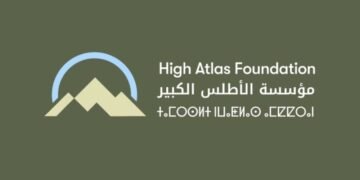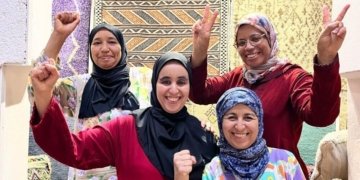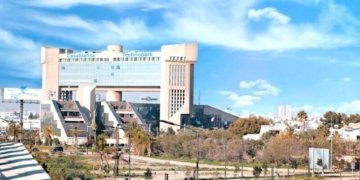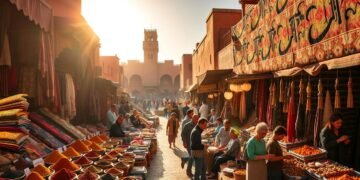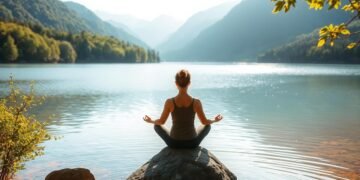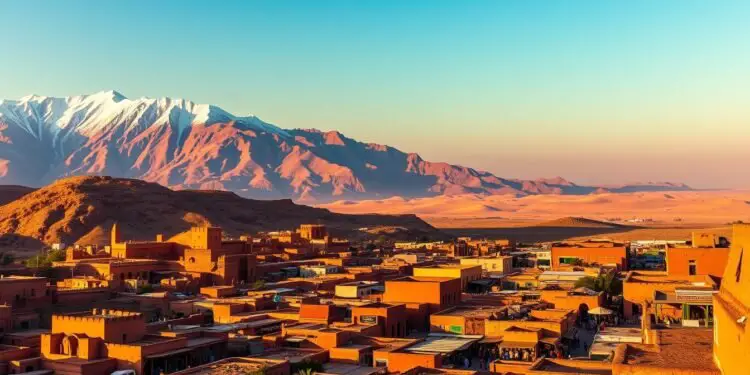Have you ever wondered how a single country can bridge the gap between ancient traditions and modern innovation? Morocco, a land of contrasts, offers a fascinating blend of history, culture, and natural beauty. From its roots as one of Africa’s oldest nations to its role as a cultural crossroads, this country has stories that span centuries.
With human presence dating back 300,000 years, Morocco’s history is as rich as its landscapes. It boasts eight UNESCO World Heritage Sites, including the Roman ruins of Volubilis and the vibrant medinas of its imperial cities. Its unique geographic position has made it a meeting point for Europe, Africa, and the Middle East, shaping its diverse identity.
Today, Morocco is a parliamentary constitutional monarchy under King Mohammed VI, blending tradition with progress. From the Sahara Desert’s golden dunes to the High Atlas Mountains’ towering peaks, this country is a treasure trove of natural wonders and historical secrets waiting to be explored.
Key Takeaways
- Morocco is one of Africa’s oldest nations, with a history spanning over 300,000 years.
- It is home to eight UNESCO World Heritage Sites, including Volubilis and the imperial cities.
- The country’s geographic location makes it a cultural crossroads between Europe, Africa, and the Middle East.
- Morocco’s parliamentary constitutional monarchy is led by King Mohammed VI.
- Its diverse landscapes include the Sahara Desert and the High Atlas Mountains.
Morocco’s Pioneering Role in Global History
Morocco has played a pivotal role in shaping global history through its bold decisions and cultural contributions. From diplomacy to education, this country has left an indelible mark on the world stage.
The First Nation to Recognize American Independence
In 1777, Morocco made history by becoming the first country to recognize U.S. independence. This bold move came just 18 months after the Declaration of Independence, showcasing Morocco’s forward-thinking diplomacy.
The 1786 Moroccan-American Treaty of Friendship further solidified this relationship. It remains the U.S.’s longest unbroken foreign treaty, a testament to the enduring bond between the two nations.
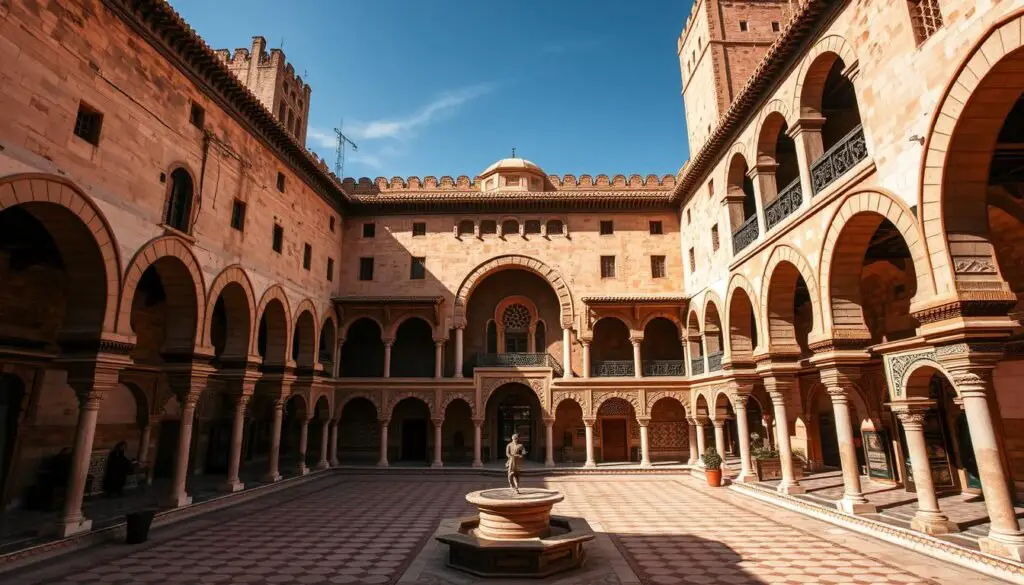
Home to the World’s Oldest University
Founded in 859 AD, the University of Al Quaraouiyine in the city of Fez holds the Guinness World Record as the oldest continually operating university. What began as a mosque evolved into a center of learning, offering degrees in fields like STEM today.
The campus features stunning 12th-century Almohad Dynasty mosaics, blending history with modern education. This institution reflects Morocco’s role as a bridge between civilizations, fostering knowledge for over a millennium.
These achievements highlight Morocco’s unique position in the world, blending tradition with innovation across centuries.
Cool Facts About Morocco’s Rich History and Culture
Morocco’s history and culture are deeply intertwined, offering a unique glimpse into its vibrant heritage. From the Amazigh people to its imperial cities, the country’s traditions and landmarks tell stories of resilience, love, and innovation.
The Amazigh People: Guardians of Tradition
The Amazigh, or Berbers, are the indigenous people of Morocco, making up 40% of the population. Their nomadic traditions in the Atlas Mountains and efforts to preserve the Tamazight language highlight their enduring connection to the land.
With over 30 million Amazigh across North Africa, their influence on Moroccan culture is profound. From intricate crafts to traditional music, they continue to shape the nation’s identity.
The Liver as a Symbol of Love
In Moroccan Arabic, the phrase “Lkbida diali” (my liver) is a term of endearment. This unique symbolism contrasts with Western imagery of the heart, reflecting the depth of emotional expression in Moroccan culture.
Such phrases are rooted in the Amazigh language, where “Thssa Ino” carries a similar meaning. These expressions reveal the poetic nature of Moroccan relationships.
Imperial Cities: Rabat, Fez, Meknes, and Marrakech
Morocco’s imperial cities are a testament to its rich history. Rabat, the political capital, contrasts with Marrakech’s “Red City” architecture, known for its red sandstone buildings.
Fez, home to the world’s oldest university, boasts a 9th-century medina with 9,500 alleys and historic tanneries. Meknes, with its grand gates and royal stables, reflects the grandeur of past dynasties.
These imperial cities are not just landmarks but living museums of Morocco’s cultural and historical legacy.
Morocco’s Natural Wonders and Unique Geography
From snow-capped peaks to golden deserts, Morocco’s geography is a testament to its beauty. This North African gem offers travelers a mix of landscapes that are as diverse as they are stunning. Whether you’re drawn to the heights of the Atlas Mountains or the vastness of the Sahara, Morocco’s natural wonders are a must-see for any tourism enthusiast.
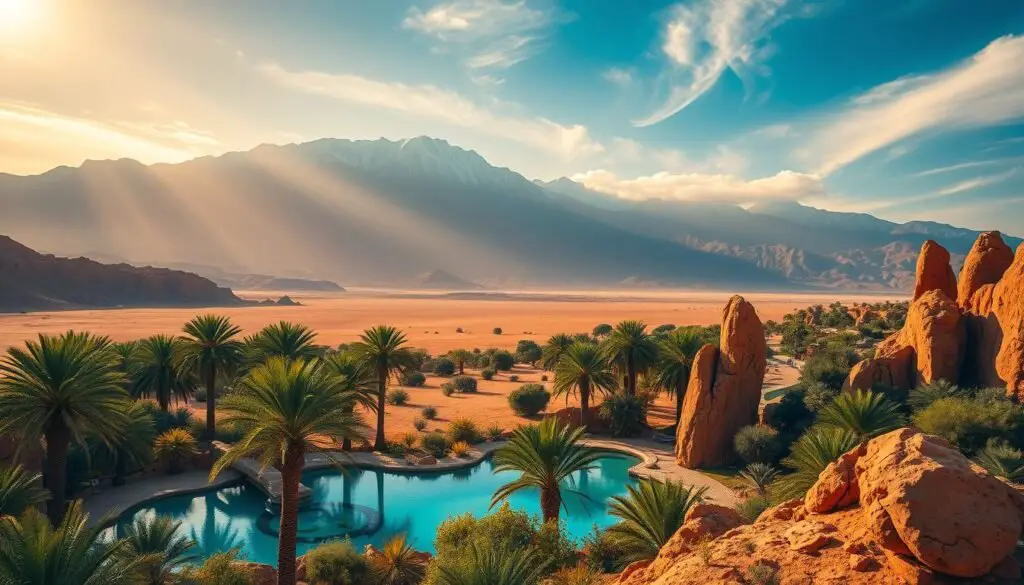
Africa’s Highest Ski Resort in the Atlas Mountains
Nestled in the High Atlas Mountains, Oukaimeden Ski Resort stands at an impressive 10,500 feet. It’s Africa’s highest ski destination, offering 20 slopes for winter sports. The resort’s military-developed terrain provides a unique backdrop of Berber villages and summer hiking trails.
During the warmer months, the area transforms into a haven for hikers and nature lovers. The surrounding peaks, including Jebel Toubkal, North Africa’s highest at 13,671 feet, offer breathtaking views and challenging climbs.
The Sahara Desert: A Landscape of Legends
The Sahara Desert is one of Morocco’s most iconic places, but it’s often misunderstood. Contrary to popular belief, only 20% of the Sahara is made up of sand dunes. The majority consists of rocky hamada plains, which add to the desert’s stark beauty.
Travelers can explore the golden dunes of Erg Chebbi or the mineral-rich soils of the hamada. The desert’s ever-changing hues make it a photographer’s dream and a highlight of any trip to Morocco.
Argan Oil: Morocco’s Liquid Gold
Morocco produces 99% of the world’s argan oil, primarily from the UNESCO-protected biosphere near Agadir. This “liquid gold” is extracted using traditional methods preserved by women’s cooperatives. The process involves hand-cracking argan nuts and cold-pressing the kernels.
Argan oil is not only a culinary delight but also a beauty staple, known for its nourishing properties. The goats that climb argan trees play a unique role in the ecosystem, aiding in seed dispersal and maintaining the tree population.
From the cedar forests housing Barbary macaques to the Mediterranean beaches, Morocco’s natural diversity is unparalleled. Whether you’re skiing in the Atlas Mountains or exploring the Sahara, this country offers unforgettable experiences for every traveler.
Modern Morocco: Achievements and Surprises
Morocco continues to surprise the world with its modern achievements and innovations. From sports to renewable energy, this country is making headlines and setting new standards.
From World Cup Glory to Thriving Wine Industry
In 2022, Morocco became the first African team to reach the FIFA World Cup semifinals. Under coach Walid Regragui, the team’s success united the nation and inspired millions. This historic achievement showcased Morocco’s growing influence in the world of sports.
Beyond sports, Morocco’s wine industry is gaining international recognition. Vineyards near the Roman ruins of Volubilis produce award-winning Syrah and Merlot wines. This thriving industry traces its roots back to the Phoenician era, blending ancient traditions with modern techniques.
Renewable Energy Leader: Africa’s Largest Wind Farm
Morocco is a pioneer in renewable energy, with the Noor Solar Plant aiming to provide 50% of the country’s energy from renewable sources by 2030. This ambitious project highlights Morocco’s commitment to sustainability and innovation.
Additionally, the Xlinks project with the UK involves building a renewable energy production site in Morocco to supply energy to the UK. This initiative underscores Morocco’s role as a leader in green energy on the global stage.
From sports triumphs to sustainable energy, Morocco is proving itself as a country of endless possibilities. Its modern achievements are a testament to its resilience and forward-thinking vision.
Conclusion
Morocco’s allure lies in its seamless fusion of timeless traditions and cutting-edge progress. This destination offers a unique trip experience, blending ancient medinas with modern innovations. For ideal weather, plan your visit during the shoulder seasons of March-May or September-November.
Combine imperial city tours with Sahara glamping and Atlas Mountain treks for an unforgettable adventure. U.S. passport holders can enjoy 90-day stays without a visa, making it an accessible state for travelers.
Looking ahead, Morocco is enhancing its tourism appeal with blue flag beaches and new high-speed rail expansions. These developments promise even more ways to explore this captivating country. Whether you’re drawn to its history, landscapes, or culture, Morocco invites you to discover its endless wonders.
FAQ
What is Morocco’s historical significance in global events?
Morocco holds a unique place in history as the first nation to recognize American independence in 1777. This act cemented its role as a diplomatic pioneer.
Where is the world’s oldest university located?
The University of Al Quaraouiyine in Fez, Morocco, is recognized as the oldest existing degree-granting university, founded in 859 CE.
Who are the Amazigh people?
The Amazigh, also known as Berbers, are indigenous North Africans who have preserved their language, traditions, and culture for thousands of years.
What makes Morocco’s imperial cities special?
Cities like Rabat, Fez, Meknes, and Marrakech are known for their historical architecture, vibrant markets, and cultural heritage, earning them the title of imperial cities.
Where can you find Africa’s highest ski resort?
Oukaïmeden, located in the Atlas Mountains, is Africa’s highest ski resort, offering stunning views and winter sports opportunities.
What is unique about the Sahara Desert in Morocco?
The Moroccan Sahara is famous for its vast dunes, ancient caravan routes, and the chance to experience traditional Bedouin culture.
Why is argan oil called Morocco’s liquid gold?
Argan oil, derived from the argan tree, is prized for its culinary and cosmetic benefits, making it a valuable and iconic Moroccan product.
What are some modern achievements of Morocco?
Morocco has gained recognition for its renewable energy initiatives, including Africa’s largest wind farm, and its thriving wine industry.
What role does Morocco play in renewable energy?
Morocco is a leader in renewable energy, with projects like the Noor Ouarzazate Solar Complex and the Tarfaya Wind Farm, making it a pioneer in sustainable development.





